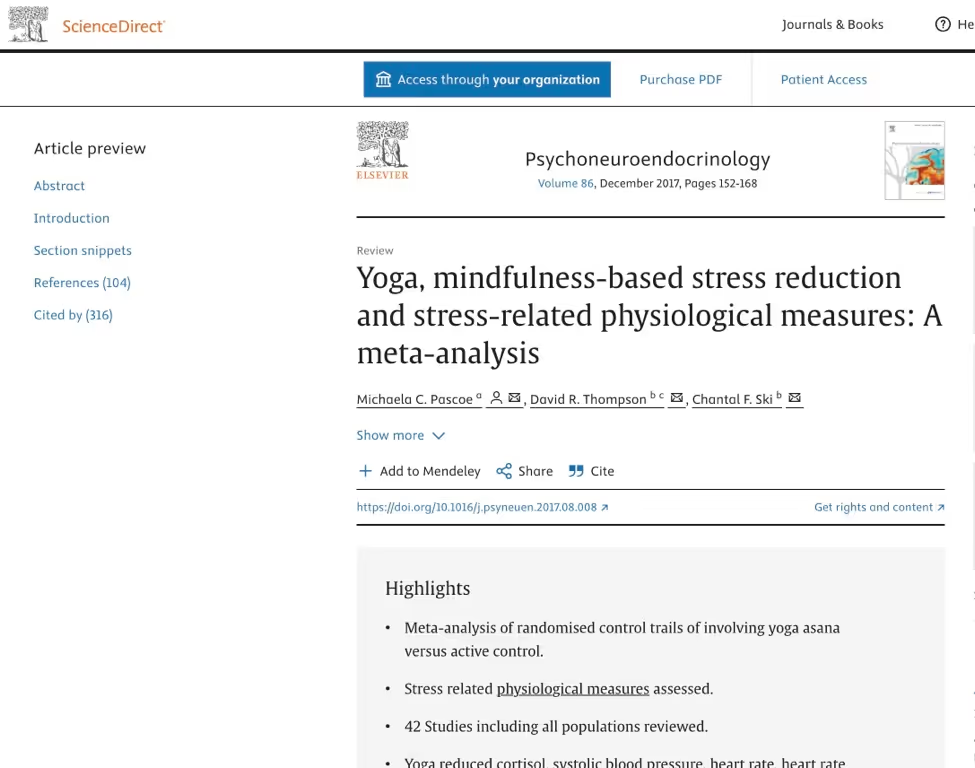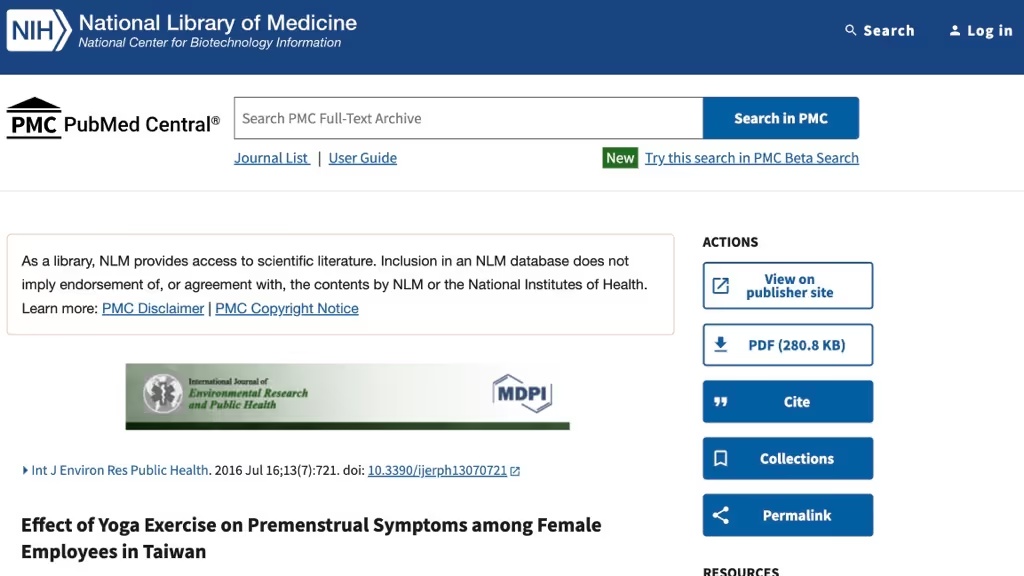When Martha (not her real name for privacy reasons) came to my classes, she was frustrated and confused. Her periods had become unpredictable, her PMS symptoms were getting worse, and her doctor kept telling her everything looked "normal" on paper. What her blood tests couldn't show was the invisible force wreaking havoc on her hormones: chronic stress.
At 38, Martha was managing a demanding job, caring for aging parents, and dealing with relationship pressures. She thought she was handling everything well until her body started sending different signals. Sound familiar?
What Martha didn't know, and what most women don't realize, is that stress and menstrual health are connected in ways that go far deeper than we once understood. Recent research is revealing exactly how stress rewires your hormonal system, and more importantly, how specific practices can help you reclaim control.
The Hidden Connection Between Stress and Your Cycle
Your menstrual cycle isn't just about reproduction. It's a monthly report card on your overall health, and stress is one of the biggest factors influencing what that report says.
When you're stressed, your body activates something called the hypothalamic-pituitary-adrenal (HPA) axis. This system was designed to help you survive immediate threats, like running from a predator. But in our modern world, this ancient system responds to work deadlines, relationship conflicts, and financial worries as if they were life-threatening emergencies.
Here's what happens: your brain releases corticotropin-releasing hormone (CRH), which triggers your pituitary gland to release ACTH, which then tells your adrenal glands to pump out cortisol, your primary stress hormone.
This cascade might save your life in a true emergency, but when it's activated daily for months or years, it creates a problem. High cortisol levels directly interfere with the delicate hormonal dance that controls your menstrual cycle.
Understanding this connection changed everything for me during my own healing journey. After my cancer diagnosis at 35, I realized that years of high-stress living had likely contributed to my health challenges. This awareness became crucial in my recovery and in developing Hormone Yoga Therapy as a healing practice.
How Stress Disrupts Your Hormonal Orchestra
Think of your menstrual cycle as a carefully choreographed symphony. Estrogen, progesterone, FSH, and LH all need to rise and fall at precise times for everything to work smoothly. Cortisol is like someone walking into the middle of this performance and shouting random instructions to the musicians.

Research published in Psychoneuroendocrinology shows that chronic stress affects your cycle in several specific ways:
Disrupted ovulation: High cortisol can suppress the luteinizing hormone (LH) surge needed for ovulation. No ovulation means no progesterone production, which can lead to irregular periods or missed cycles entirely.
Shortened luteal phase: Even if you do ovulate, stress can shorten the second half of your cycle. This means less time for progesterone to do its important work, leading to more intense PMS symptoms.
Increased inflammation: Chronic stress creates inflammatory responses throughout your body, including in your reproductive organs. This inflammation can worsen period pain and other menstrual symptoms.
Sleep disruption: Stress interferes with sleep quality, and poor sleep further disrupts hormone production. It becomes a vicious cycle where stress causes sleep problems, which cause more hormone imbalances, which create more stress.
This is particularly challenging for women entering perimenopause, when hormonal fluctuations are already occurring naturally. The added burden of chronic stress can make this transition far more difficult than it needs to be.
The Groundbreaking Research on Yoga and Menstrual Health
Here's where the story gets hopeful. Multiple studies published in journals including BMC Complementary and Alternative Medicine are showing that yoga practice can literally rewire how your body responds to stress, with direct benefits for menstrual health.

A comprehensive meta-analysis of 42 studies found that yoga interventions significantly reduce cortisol levels and improve HPA axis regulation. But the researchers discovered something even more interesting: yoga doesn't just help you relax in the moment, it actually changes how your nervous system responds to future stressors.
One particularly revealing study looked at women with painful periods. After 12 weeks of regular yoga practice, participants showed not just reduced pain, but measurable changes in their stress hormone patterns. Their cortisol levels became more balanced throughout the day, and their inflammatory markers decreased significantly.
Here's the proof from one of my regular students as well. Results like these, I've seen first hand again, and again.

Five Ways Yoga Rewires Your Stress Response
The research identifies five specific pathways through which yoga practices improve menstrual health:
1. Positive Affect Enhancement
Yoga practice increases production of feel-good neurotransmitters like GABA, serotonin, and dopamine. These chemicals directly counteract stress hormones and help regulate mood throughout your cycle. This is particularly important for women experiencing mood swings during menopause.
2. Mindfulness and Present-Moment Awareness
The breathing techniques and body awareness cultivated in yoga help break the cycle of anxious thoughts that keep your stress response activated. When your mind isn't constantly anticipating future problems or reliving past difficulties, your nervous system can finally relax.
3. Self-Compassion Development
Many women have complicated relationships with their bodies, especially around menstruation. Yoga practice helps develop a more accepting, compassionate attitude toward your body's natural processes, reducing the psychological stress that can worsen physical symptoms.
4. Hypothalamic Inhibition
This is where it gets really fascinating. Specific breathing techniques used in yoga appear to directly calm the hypothalamus, the brain region that initiates your stress response. When the hypothalamus is less reactive, the entire stress cascade becomes less intense.
5. Direct Cortisol Reduction
Studies consistently show that regular yoga practice lowers both baseline cortisol levels and cortisol reactivity to stressors. This means you start from a calmer place and don't spike as high when challenges arise.
The University of California, LA (UCLA) Breakthrough Study
One of the most compelling pieces of research comes from UCLA, published in Pain Medicine journal, where researchers tested a specific mind-body intervention for women with severe menstrual pain. The program combined gentle yoga postures with breathing techniques and mindfulness practices.

After just eight weeks, participants experienced an average 2-point reduction in pain scores, a clinically significant improvement. But the researchers found something even more important: the women who practiced consistently showed lasting changes in their stress-hormone patterns that persisted months after the study ended.
Dr. Jennifer Harte, who led the research, noted that the intervention seemed to "reset" participants' nervous systems, making them more resilient to future stressors.
This research validates what I've seen in my work with over 700 women: when we address the root causes of hormonal imbalance, including chronic stress, the body has remarkable healing capacity.
The Power of Targeted Breathing Techniques
One of the most accessible and powerful tools for rewiring your stress response is breathwork. Ancient breathing techniques have been used for thousands of years, and modern science is now proving their effectiveness.
Research shows that specific breathing patterns can:
- Reduce cortisol levels within minutes
- Activate the parasympathetic nervous system
- Improve heart rate variability
- Balance autonomic nervous function
The beauty of breathwork is its immediate accessibility. You don't need special equipment, a gym membership, or even much time. Just 5-10 minutes of conscious breathing can begin to shift your nervous system state.
Simple Practices That Make a Real Difference
You don't need to become a yoga expert to benefit from these findings. Research shows that consistency matters more than complexity. Here are three evidence-based practices you can start with:
The 4-7-8 Breath
This simple technique directly activates your parasympathetic nervous system, the "rest and digest" mode that allows hormone production to normalize.
Inhale through your nose for 4 counts, hold for 7 counts, then exhale through your mouth for 8 counts. Repeat 4-8 cycles. Practice this twice daily, especially during the two weeks before your period when cortisol sensitivity is highest.
Gentle Forward Folds
Research shows that poses that curl your body inward help activate the vagus nerve, which sends signals to your brain that it's safe to relax. You don't need perfect flexibility, even sitting in a chair and folding forward gently can be effective.
Body Scan Meditation
Studies demonstrate that practices involving focused attention on different body parts help develop the mind-body awareness that's crucial for breaking stress cycles. Lie down and slowly move your attention from your toes to the top of your head, noticing sensations without trying to change them.
The Ayurvedic Perspective on Stress and Cycles
Ayurveda offers profound insights into the stress-menstrual health connection. In this ancient system, stress is understood as an imbalance of Vata dosha, the energy governing movement and nervous system function.
When Vata becomes excessive due to chronic stress, it disrupts the natural flow of Apana Vayu, the downward-flowing energy responsible for menstruation. This disruption can manifest as:
- Irregular or painful periods
- Anxiety and restlessness
- Sleep disturbances
- Digestive issues
The Ayurvedic approach to rebalancing involves grounding practices, warming foods, and establishing regular routines, all of which modern science confirms help regulate stress hormones.
Beyond Individual Practice: Creating a Supportive Environment
While personal practices are crucial, the research also emphasizes the importance of addressing external stressors. Your menstrual health isn't just about what you do on your yoga mat, it's also influenced by your relationships, work environment, and social support systems.
Consider these evidence-based approaches:
Boundary setting: Research shows that women who feel they have control over their schedules and commitments have more regular cycles and fewer stress-related menstrual symptoms.
Social connection: Studies consistently find that women with strong social support networks have better hormonal health outcomes. This might mean joining a supportive yoga class, connecting with women who understand your experiences, or simply prioritizing relationships that nourish rather than drain you.
Environmental modifications: Sometimes the most powerful intervention is changing your surroundings. This might mean negotiating more flexible work arrangements, addressing relationship dynamics that create chronic stress, or even simple changes like creating a calm space in your home for daily practice.
The Integration of Science and Ancient Wisdom
What excites me most about this research is how it validates what traditional healing systems have taught for millennia. The scientific evidence now shows that practices like yoga and breathwork aren't just stress management techniques, they're powerful interventions that can literally reshape your physiology.
This integration of ancient wisdom with modern science is what makes holistic approaches so effective. We're not just treating symptoms; we're addressing root causes and supporting the body's natural healing mechanisms.
What This Means for You
The research is clear: your menstrual symptoms aren't "just in your head," but your head, specifically how your brain responds to stress, plays a crucial role in your physical experience.
This understanding is empowering because it means you have more control than you might think. While you can't eliminate all stress from your life, you can change how your body responds to it. And those changes can have profound effects on your menstrual health.
Martha, the woman I mentioned earlier, discovered this for herself. After six months of consistent practice, just 15 minutes daily of breathing exercises and gentle movements, her cycles became regular again. Her PMS symptoms diminished significantly. But perhaps most importantly, she felt more connected to and trusting of her body.
Starting Your Own Transformation
If you're ready to explore how these research findings might apply to your life, remember that small, consistent steps create the most lasting change. You don't need to overhaul everything at once.
Choose one practice that resonates with you and commit to it for at least four weeks. Track not just your menstrual symptoms, but also your stress levels, sleep quality, and overall sense of well-being. Your body is constantly communicating with you, these practices simply help you become a better listener.
The connection between stress and menstrual health is real, but so is your capacity to influence that connection. Every breath you take mindfully, every moment you spend in conscious movement, every instance of self-compassion is a step toward the hormonal harmony your body is designed to experience.
Whether you're dealing with irregular cycles, painful periods, or the challenges of hormonal transitions, know that your body has an incredible capacity for healing when given the right support. The research proves it, traditional wisdom confirms it, and thousands of women have experienced it firsthand. Join them on journey journey toward stress-free cycles. Click here to be part of the next Hormone Yoga Therapy Group Program. If you join the waitlist today, next week, on 5th of September you'll get the opportunity to be one of 20 women that I will guide in September through this evidence-based practices.
Free Email Course to Better Understand Your Hormones
Get clear, practical information directly to your email, to help you manage hormonal changes.
In just few minutes a day, you'll learn:
The real reasons behind hot flashes and mood swings
2-minute breathing techniques you can use anywhere
Simple yoga poses that balance your hormones
Quick fixes for sudden symptoms during meetings
Daily practices that create lasting change
Each email brings you closer to understanding and working with your body's natural rhythms.




.avif)

